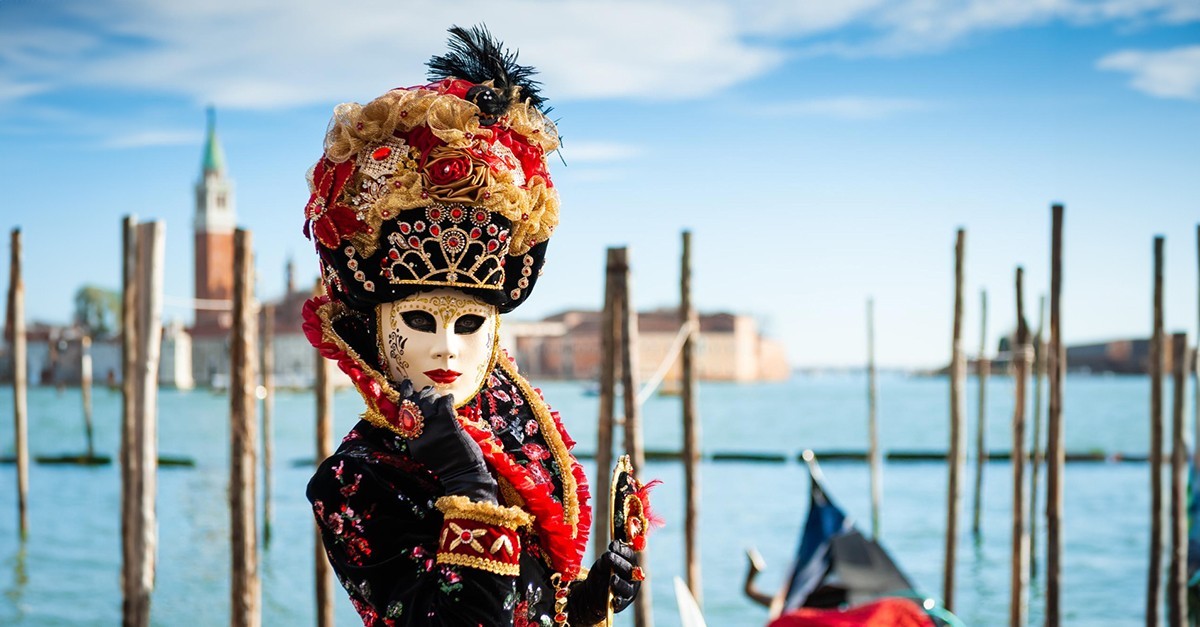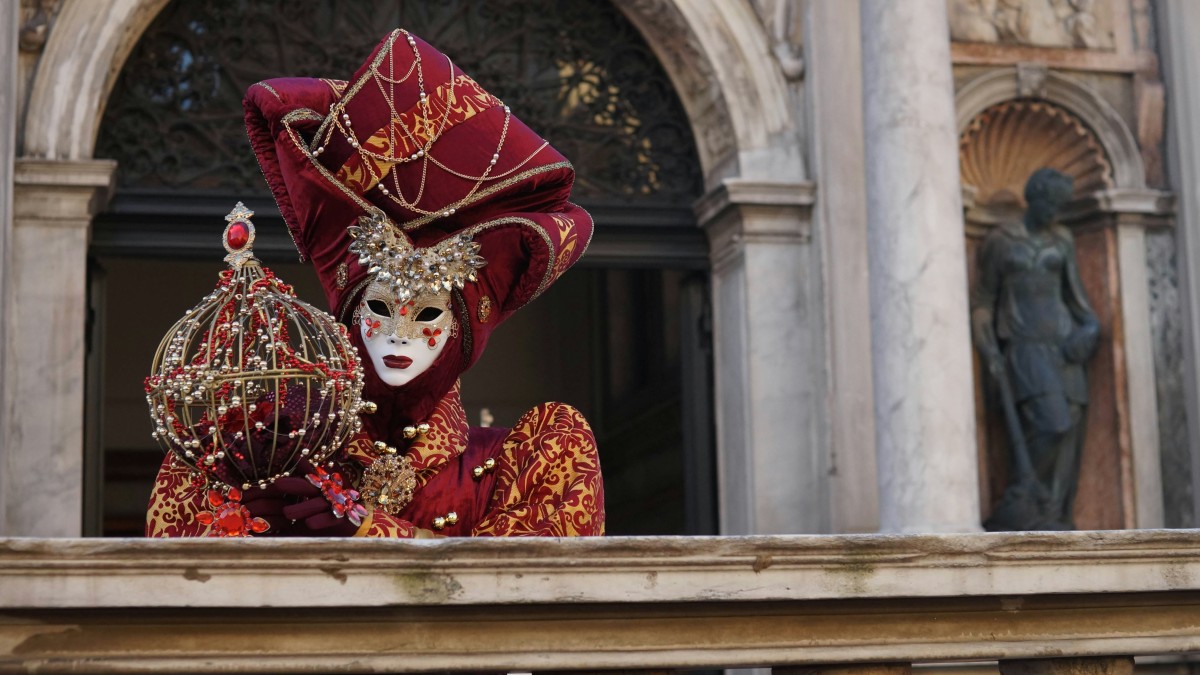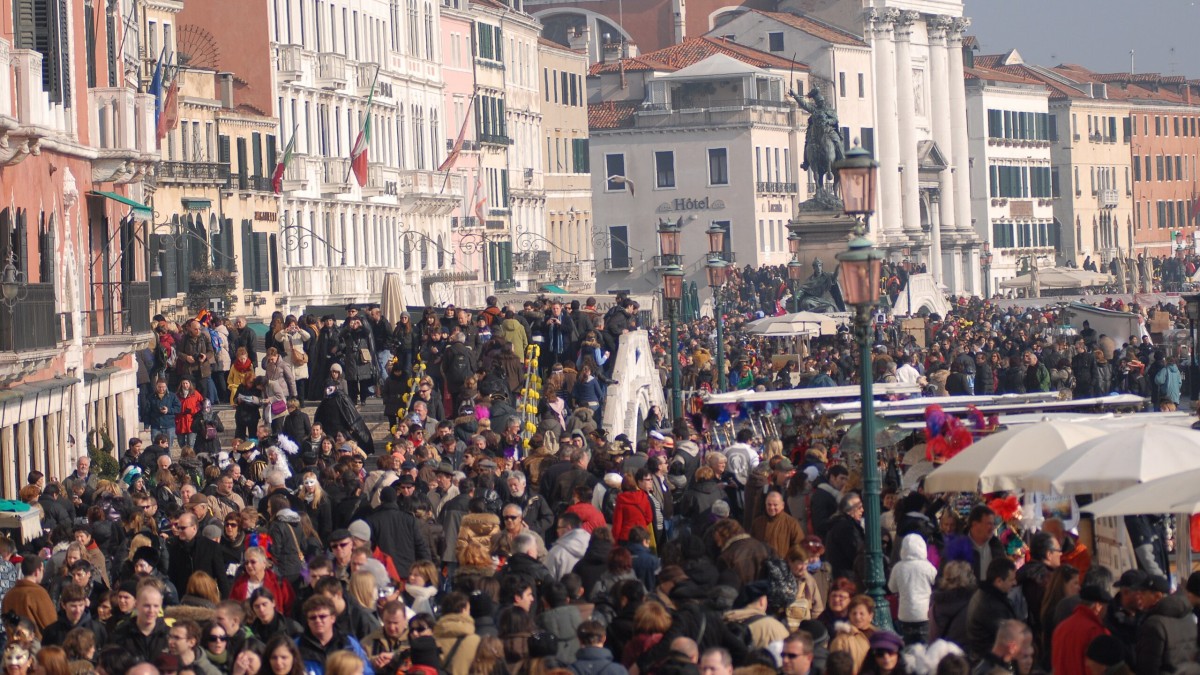
The Venice Carnival is one of the most iconic and renowned events in the world. With its traditional masks, lavish costumes, and a unique atmosphere that captivates the entire city, it is one of the most beautiful carnival celebrations in the world. If you want to take part this year, here’s everything you need to know about the Venice Carnival 2025 and how to plan your visit.
History and traditions of the Venice Carnival
The Venice Carnival has ancient origins dating back to at least the 11th century, when it was celebrated as a period of festivity and freedom before Lent. This tradition, beloved even by the ancient Romans, was officially recognised in 1296 when the Senate of the Republic of Venice declared the day before Lent as a public holiday. For this reason, during the Middle Ages and the Renaissance, the Carnival became a highly important event lasting six weeks: from 25 December to Ash Wednesday.
The Venetian masks, an unmistakable symbol, were originally used to allow citizens to hide their identity and freely mingle among the different social classes. The masks were made from clay, papier-mâché, as well as plaster or gauze. The artisans who created them were officially recognised in 1436 and became widely known as "mascareri".
The most famous historical masks include the Bauta, which was complemented by a dark cloak called a tabarro. Also very popular was the Moretta, a dark velvet mask paired with a small hat.

When does the Venice Carnival begin?
The Venice Carnival is an eagerly anticipated event. For the 2025 edition, it will officially begin on 14 February and end on 4 March. This year, the theme is "The Time of Casanova," as the city celebrates the 300th anniversary of Giacomo Casanova’s birth. The events scheduled will take place both in the lagoon and in many locations on the mainland.
Venice Carnival 2025: the full programme
The programme for the Venice Carnival 2025 will be packed with events celebrating the culture and traditions of the Serenissima. The main events will include parties, live concerts in the city’s main squares, theatrical performances, and artistic workshops. The programme will be as follows:
- Friday 14 February: The stage in Piazza San Marco will be inaugurated, the Venice Carnival Street Show will take place, and the Valentine’s Night celebration will be organised.
- Saturday 15 February: More Carnival events will be held, along with workshops and theatrical performances.
- Sunday 16 February: The 2025 Water Parade will take place, along with street parades.
- Friday 21 February: At 7:00 PM, the Arsenale Water Show will take place, showcasing the life of Casanova at one of the must-visit spots in Venice.
- Saturday 22 February: The official Carnival dinner will be held at Ca' Vendramin Calergi. Additionally, at 3:30 PM, the Festa delle Marie will take place, featuring the famous water parade. At the end of the parade, the 12 Marie will be presented on the stage in Piazza San Marco.
- Sunday 23 February: The parade and the show at the Arsenale will be held again, as well as the Carnival dinner. These events will be repeated over the next two weekends.
For more details on all the events in the city and its surroundings, you can visit the official Venice Carnival website.

When is the best time to visit the Venice Carnival?
To fully enjoy the Carnival while avoiding excessive crowds, consider visiting Venice during the weekdays at the start of the Carnival. It's also worth staying overnight to take part in the evening events in the square or private parties.
If you want to experience the highlights of the Carnival, you might want to visit Venice during the opening, the Festa delle Marie, or on Shrove Tuesday, which this year will be on 4 March, the closing day of the Carnival.

Some fun facts about the Venice Carnival
Many people are familiar with some of the key facts about Venice, but there are lesser-known yet fascinating aspects of the Carnival. The festivities offered a rare sense of freedom, so much so that they seemed to challenge every rule and convention. In fact, everyone could take part on equal terms, including the Doge himself.
That said, the masks were still bound by a code of conduct. Speaking was generally forbidden, except for whispering, and communication was done through gestures. In addition, masks would bow as a gesture of respect. The Carnival is a tradition that is both structured and resilient: after being banned by Napoleon, it made a spectacular comeback two centuries later, in 1979. Furthermore, Carnival in the lagoon city also meant a complete break from work: those caught “in flagrante” were either arrested or, better yet, forced to drink rivers of wine.
Living in Venice
Venice is a city that deserves to be explored at least once in a lifetime, but living there offers a unique opportunity to immerse yourself in the culture of one of the most enchanting places in the world. Living in Venice means being able to discover hidden corners and unexpected perspectives on a daily basis.
Despite its unique layout, Venice has all the services necessary for daily life and is well connected, thanks to an efficient transport network, with other Italian and European cities. There are also opportunities for education, with renowned universities, and as a result, work prospects. All that’s left is to discover, with idealista, the best neighbourhoods in the city and find the homes for sale or rent that suit you.
